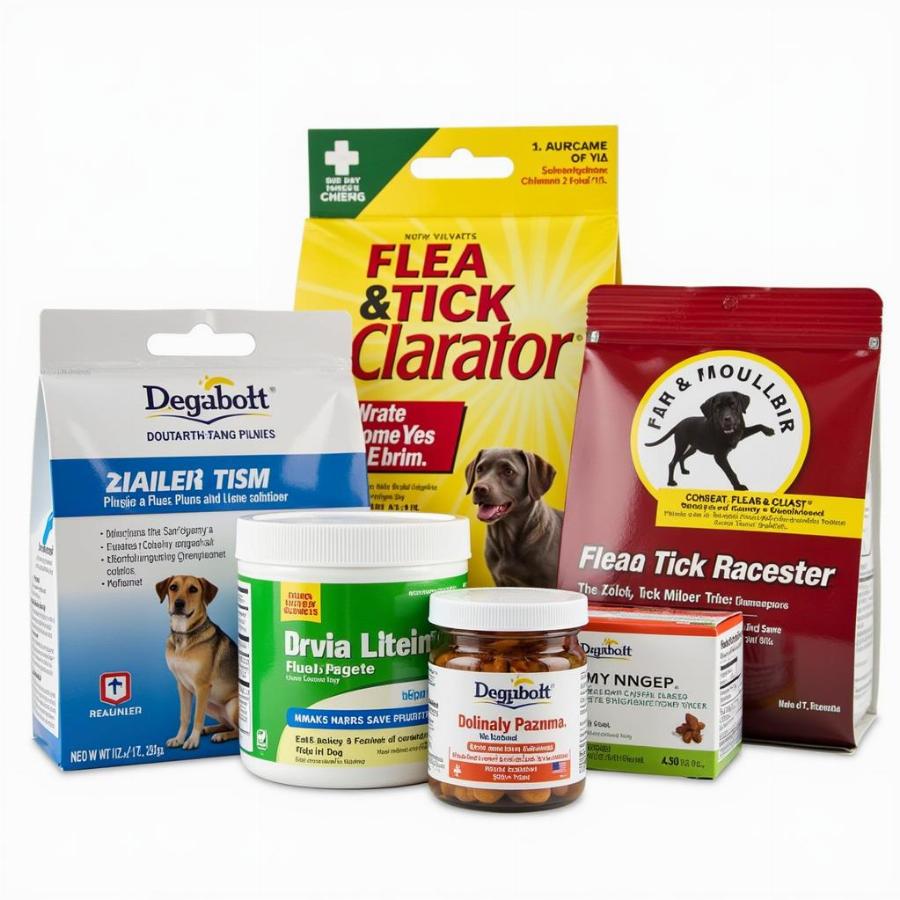Flea and tick infestations can be a nightmare for both dogs and their owners. Finding the right chewable flea and tick for dogs is crucial for protecting your furry friend from these pesky parasites and the diseases they carry. This comprehensive guide will delve into everything you need to know about chewable flea and tick preventatives for dogs, helping you make the best choice for your canine companion.
Choosing the Right Chewable Flea and Tick for Dogs
With so many options available, selecting the best chewable flea and tick product for your dog can be overwhelming. Consider your dog’s age, weight, breed, and overall health. Some medications are specifically formulated for puppies or senior dogs, while others might not be suitable for dogs with certain medical conditions. Always consult your veterinarian before starting your dog on any new flea and tick medication. They can recommend the most appropriate product based on your dog’s individual needs and risk factors.
Understanding the Different Types of Chewable Flea and Tick Medications
Chewable flea and tick medications typically work by disrupting the parasite’s life cycle. Some prevent fleas and ticks from laying eggs, while others kill adult fleas and ticks. Common active ingredients include afoxolaner, fluralaner, and sarolaner. Each ingredient has a different duration of effectiveness, so choose one that suits your lifestyle and preferences.
 Types of Flea and Tick medicine for dogs
Types of Flea and Tick medicine for dogs
How to Administer Chewable Flea and Tick Medication
Most chewable flea and tick preventatives are palatable and designed to be given like a treat. However, some dogs might be picky eaters. You can try hiding the medication in a small piece of cheese or meat, or mixing it with their food. Ensure your dog consumes the entire dose.
Are Chewable Flea and Tick Medications Safe for Dogs?
When used as directed, chewable flea and tick medications are generally safe for dogs. However, like any medication, there is a potential for side effects. These can range from mild gastrointestinal upset to more serious neurological issues. Monitor your dog closely after administering the medication and contact your veterinarian immediately if you notice any unusual symptoms.
What to Do if Your Dog Experiences Side Effects
If your dog experiences any side effects after taking a chewable flea and tick medication, stop administering the medication and contact your veterinarian immediately. They can advise you on the best course of action, which might involve switching to a different medication or providing supportive care.
Conclusion
Choosing the right chewable flea and tick for dogs is an important part of responsible pet ownership. By understanding the different types of medications available, their potential side effects, and how to administer them correctly, you can help protect your furry friend from these harmful parasites. Always consult with your veterinarian before starting your dog on any new flea and tick medication. They can help you make the best choice for your dog’s individual needs and ensure their health and well-being.
FAQ
- How often should I give my dog chewable flea and tick medication? Answer: This depends on the specific product. Some are given monthly, while others are given every three months. Consult your veterinarian or the product label for instructions.
- Can I use chewable flea and tick medication on pregnant or lactating dogs? Answer: Not all flea and tick medications are safe for pregnant or lactating dogs. Consult your veterinarian for recommendations.
- What should I do if my dog vomits after taking the medication? Answer: Contact your veterinarian. They may recommend re-dosing or switching to a different product.
- Are there any natural alternatives to chewable flea and tick medications? Answer: While some natural remedies exist, their effectiveness varies. Discuss these options with your veterinarian before trying them.
- Can fleas and ticks become resistant to chewable medications? Answer: Yes, resistance can develop. Rotating different types of flea and tick preventatives can help minimize this risk.
- How long does it take for chewable flea and tick medication to work? Answer: Most medications start working within a few hours.
- Can I use a chewable flea and tick medication intended for dogs on my cat? Answer: No, never give a dog medication to a cat. Many flea and tick medications for dogs are toxic to cats.
Beaut Dogs is your one-stop resource for all things related to dog care. We provide comprehensive information on various dog breeds, health care, nutrition, training, and much more. For personalized advice and support, contact us via Email at [email protected]. We’re here to help you provide the best possible care for your beloved canine companion.